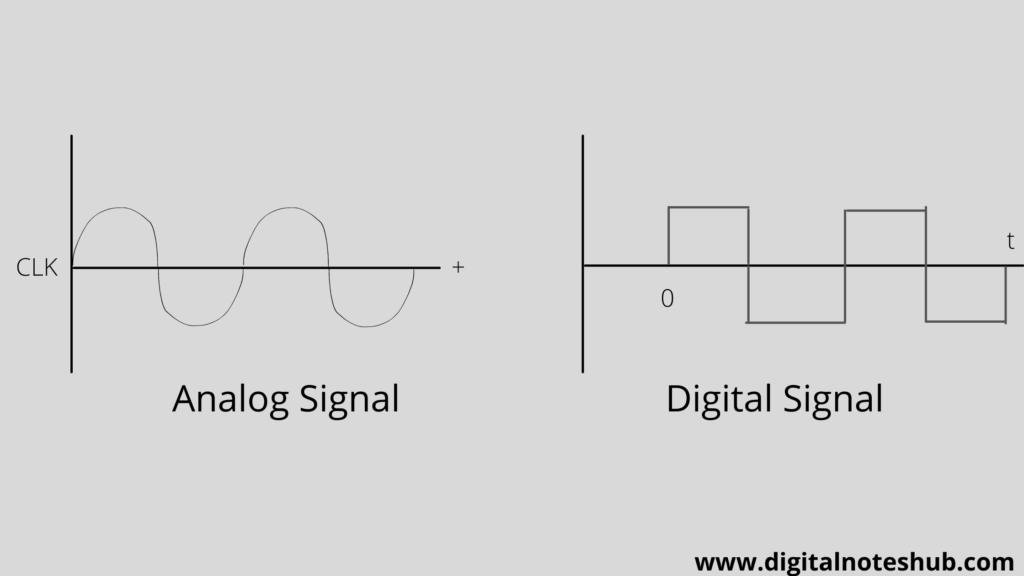
In this tutorial, you’re going to learn analog and digital signals in computer networking with the help of proper diagrams and examples.
Let’s get Started, Happy learning!
What is a Signal?
A signal is an electrical or electromagnetic current that is used to transfer data from one network to another. There are two types of signals which are used in computer networking, such as analog and digital signals.
What is Analog Signal?
These are the signals which can have an infinite number of different magnitude or values. They vary continuously with time. They are generated by signal generations hardware. In computer networks, analogue signals are mainly classified into two types as follows.
- Simple Analog Signal
- Composite Analog Signal.
Simple Analog Signal
It is the analog signal which cannot be decomposed into further simpler signals. There are two types of simple analog signals, such as sine wave and cosine wave.
Composite Analog Signal
It is composed or made of multiple sines or cosine waves. The composite signal is further divided into three parts, such as square, triangle and pulse waves.
What is Digital Signal?
A digital signal is a discrete-time signal having finite no. of amplitudes. They are discrete in nature. Binary signals are examples of digital signals. The following diagram shows the diagrammatic comparison of the digital and analog signals.

Analog and Digital Signal Difference
The following table shows the analog and digital signals difference in computer networking.
| Analog Signal | Digital Signal |
|---|---|
| It uses a continuous range of values to represent information. | Digital signal uses discrete signals to represent information. |
| The bandwidth of the analog signal is low. | The bandwidth of a digital signal is high. |
| There is no fixed range in analog signals. | Digital signal has a finite range, i.e. 0 and 1 |
| It is denoted by sine waves, as shown in the above diagram. | It is denoted by square waves as shown in the above diagram |
| Analog signals are used in temperature sensors, FM radio, photocells and light sensors. | Digital signals are used in computers, DVDs and CDs |
Important Terms
The following are some important terms that are commonly used in signals.
Bit interval–The bit interval is the time required to send one bit.
Bit rate–Bit rate is the number of bits transmitted or sent in one second. It is expressed in bit per second.
Bit rate = 1 / Bit interval
Bandwidth–It is defined as the frequency range over which an information signal is transmitted. Bandwidth is the difference between the upper and lower frequency limits of the signal.
BW = f2-f1
Period–Period is the reciprocal of the frequency. It is the duration of one cycle per unit period in a second. T, denotes the period.
T = 1 / f
Data rate limits–A very important factor in data communication is how fast we can send data in bits per second. Data rate depends upon three factors.
- Bandwidth available.
- The level of signal we use.
- The quality of the channel.
Nyquist Bit rate–For a noiseless channel, the Nyquist bit rate formula is used, and it defines the theoretical maximum bit rate.
Bit rate = 2 * bandwidth * Log 2L
In this formula, bandwidth is the bandwidth of a channel, L is the number of levels used to represent data, and bit rate is the bit rate in bits per second.
Increasing the levels of the signal may reduce the reliability of the system.
Was this article helpful?
Have you enjoyed the article of analog and digital signals? let me know in the comment section.
Additional Notes
